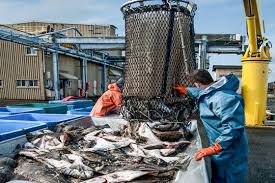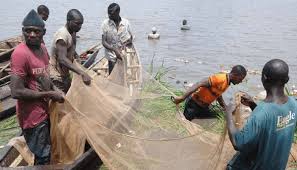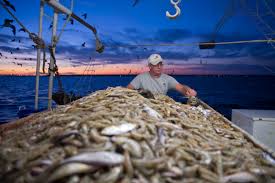The decision as to whether an Environmental Impact Assessment (EIA) is required, and at what level of detail, is often formalized in a process referred to as Screening. This process ensures that EIA is only applied where necessary, and is typically based on some form of environmental risk assessment. In many countries, aquaculture development requires an EIA if it meets certain thresholds in terms of area, production, or water use.
For instance, in Asia, these thresholds generally vary between 10 and 50 hectares, though different provisions may apply for pond and cage farms, as well as for freshwater or marine environments. The practical effect of this is that most significant intensive marine finfish developments are included, while small-scale and extensive production, shellfish farming, and most freshwater farming are excluded.
The EU guidance (European Commission, 2001) emphasizes the need to apply Screening carefully, so as not to undermine smaller and more routine projects.
Some countries have specific lists of activities that require different approaches. For example, Egypt has three lists: black, white, and grey. Aquaculture is included in the grey list, meaning an EIA may be required.
However, if the project is located in an environmentally sensitive area, it becomes a “black list” activity and automatically requires a full EIA. In Nigeria, an EIA is required if the project is near coral reefs, mangrove swamps, wetlands, or involves significant drainage and irrigation.
This article will define Screening and highlight its importance in the Fisheries Environmental Impact Assessment (EIA) process. It will outline the major activities involved in Screening and identify the different techniques used in Screening.
Read Also: Feijoas: History, Nutrition, Health Benefits and Growing Guide
Definition of Screening in Fisheries Environmental Impact Assessment

Screening and preliminary assessment represent the first stage of the EIA process, helping to distinguish between projects that need further clearance and those unlikely to cause serious environmental problems.
This separation is achieved by considering criteria such as the size or location of the project, comparing proposals (projects that require EIAs and those that do not), and predicting general impacts. If the project is not automatically cleared, the developer may be asked to undertake a preliminary assessment. At this stage, some research and expert advice are required to:
i. Identify key impacts
ii. Predict and describe the extent of the impacts
iii. Evaluate their importance to decision-makers
This preliminary stage may serve as an early warning of issues such as the suitability of the project’s location and potential environmental problems. If a full EIA is required by the competent authority, they will formulate the technical guidelines or Terms of Reference (ToRs).
The conduct of Screening involves making a preliminary determination of the expected impact of a proposal on the environment and its relative significance. A certain level of basic information about the proposal and its location is necessary for this purpose.
The time taken to complete the Screening process depends on the type of proposal, the environmental setting, and the level of experience in understanding its potential effects. Most proposals can be screened quickly (in an hour or less), but some will take longer, and a few will require extended Screening or an initial assessment.
Similarly, most proposals may have few or no impacts and will be screened out of the EIA process, while a smaller number will require further assessment. Only a limited number of proposals, typically major projects, will require a full EIA, due to their potentially significant adverse impacts on the environment, such as on human health and safety, endangered species, protected areas, ecosystems, air and water quality, or local communities’ livelihoods. The Screening process can have one of four outcomes:
- No further level of EIA is required
- A full and comprehensive EIA is required
- A more limited EIA is required (often called preliminary or initial assessment)
- Further study is necessary to determine the level of EIA required (often called an initial environmental evaluation or examination [IEE])
Read Also: Trichomoniasis: Description, Damages Caused, Control and Preventive Measures
Importance of Screening in Fisheries Environmental Impact Assessment

Screening establishes the basis for Scoping, which identifies the key impacts to be studied and establishes the Terms of Reference (ToR) for an EIA. Many EIA systems have formal Screening and Scoping procedures. However, in some cases, these terms may be used differently or applied at the discretion of the proponent.
Types of Screening in Fisheries Environmental Impact Assessment
1. Initial Environmental Evaluation or Examination (IEE): An IEE is required in some EIA systems when the potential environmental impacts of a proposal cannot be determined using a standard screening procedure. Typically, an IEE is a relatively low-cost analysis that relies on existing information.
It is carried out using EIA procedures and methods that are scaled to the purpose. Key issues can be identified through rapid scoping, based on consultations with local people and agencies. A site visit is usually conducted to survey the current situation and gather baseline information.
Simple methods, such as checklists or matrices, are used to identify impacts, often focusing on mitigation measures. Depending on the findings, the IEE report can be used as a scoping document for a full EIA or to support environmentally sound planning when no further review is needed.
An IEE is a preliminary EIA study that:
i. Describes the proposal and the environmental setting
ii. Considers alternatives to improve environmental benefits
iii. Addresses the concerns of the local community
iv. Identifies potential environmental effects
v. Identifies measures to mitigate adverse impacts
vi. Describes environmental monitoring and management plans, if necessary
2. Environmental Overview: The Environmental Overview was developed by UNDP as an in-house tool to integrate environmental considerations into its proposed activities at either the project or strategic level. Although not equivalent to a preliminary EIA, it is based on similar steps, involves key stakeholders, and serves similar purposes.
The Environmental Overview is designed to quickly identify environmental and social baseline conditions, major impacts, and opportunities associated with implementing a proposal. The purpose is to incorporate environmental objectives into the design of the proposal, rather than produce a report.
3. Class Screening: A class screening may be conducted for any type of project or activity where there is sound knowledge of environmental effects and established mitigation measures. This approach is used in some countries, such as Canada, and by organizations like the World Bank.
It is typically applied to small-scale projects that are routine and replicable, such as dredging or the installation of culverts. A class screening documents known impacts and standard mitigation practices, which serve as a model for future screenings of similar projects.
However, site-specific and cumulative effects must still be considered, and separate documents may be needed if a project does not meet previously established mitigation requirements.
Specific Methods Used in Fisheries Screening
The specific methods used in the screening process for fisheries-related EIA include:
i. Legal (or policy) definitions of proposals to which EIA does or does not apply
ii. Inclusion lists of projects (with or without thresholds) that automatically require an EIA
iii. Exclusion lists of activities that do not require EIA due to their insignificance or exemptions by law (e.g., national security or emergency activities)
iv. Criteria for case-by-case screening to identify proposals that require an EIA due to potentially significant environmental effects
In this article, it has been explained that Screening is a crucial part of the EIA process, determining whether an EIA is required for a particular fisheries project. The various types of screening methods have also been identified.
Do you have any questions, suggestions, or contributions? If so, please feel free to use the comment box below to share your thoughts. We also encourage you to kindly share this information with others who might benefit from it. Since we can’t reach everyone at once, we truly appreciate your help in spreading the word. Thank you so much for your support and for sharing!
Read Also: Top 20 Proven Benefits of Ginger Plant

